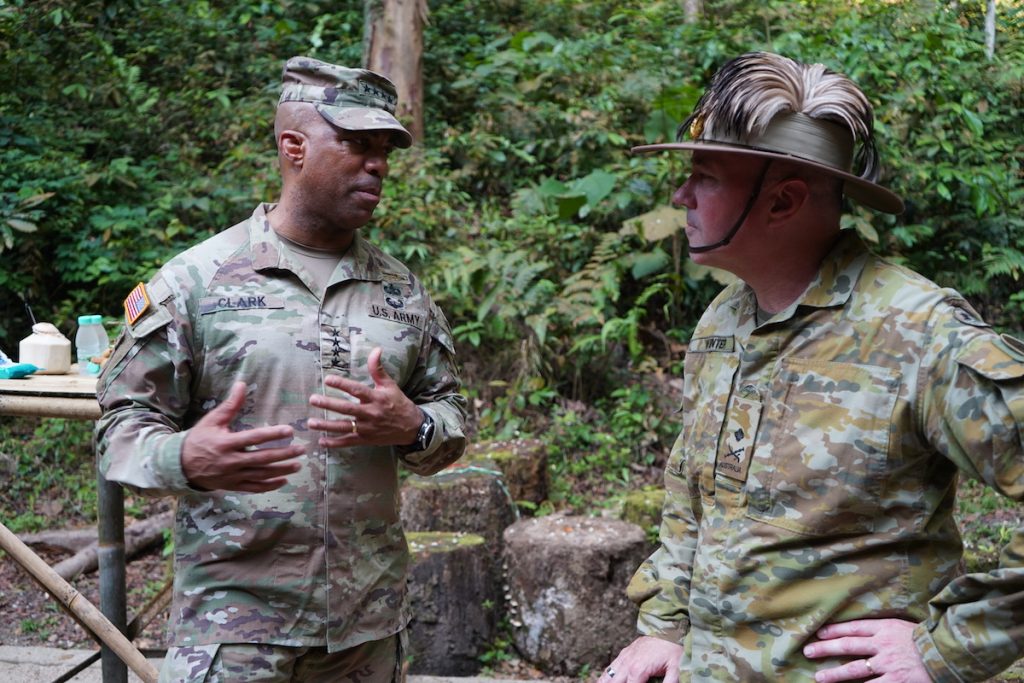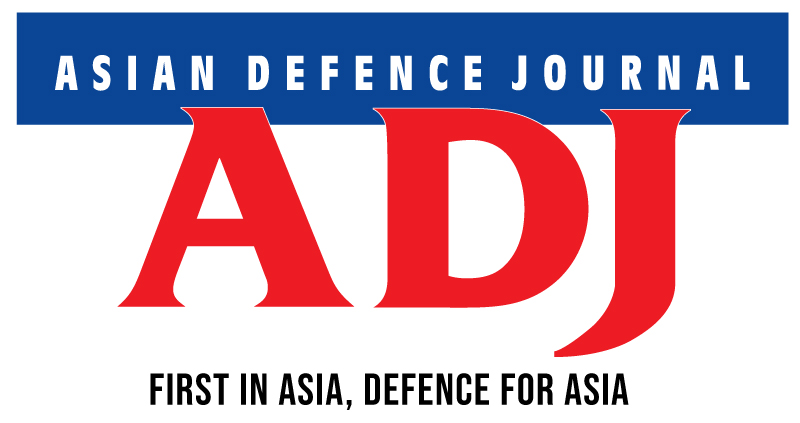General Ronald P. Clark, Commanding General US Army Pacific
CO-HOSTING the Indo-Pacific Armies Chiefs Conference (IPACC), Indo-Pacific Armies Management Seminar (IPAMS) dan Senior Enlisted Leaders Forum (SELF) 2025 with the Malaysian Army, United States Army Pacific (USARPAC) Commanding General General Ronald Clark spent some time with the Asian Defence Journal in Kuala Lumpur.
ADJ: General, with modern warfare becoming increasingly complex as seen in recent conflicts, how does USARPAC look to adapt to evolving threats in the region?
CG: That is a great question. What you asked was a key theme throughout the conference because a lot of our partners and allies along with the Army are doing some really great work in our joint force capacity on how we leverage technology and modernise our force to meet the changing characteristics of war. We see the use of drones and autonomous systems, long-range precision fires, electronic warfare (EW) and information operations on the battlefield. We have become very adept at those skill sets based on the transformation of our formations.
Take the 25th Infantry Division which I had the honour of serving in and commanding – it is the most transformed division in the US Army. This is because as the Army began its transformation efforts through an Army Transformation Initiative, the 25th Infantry Division was one of the first units to field new equipment in order to change some of the methods on how we are organised and trained to meet emerging threats. So we are able to share some of that information throughout the conference with participants who are going through very similar Transformations in Contact (TiC) as we have and allows us to learn from each other as we leverage technology and autonomous systems in some cases to be more lethal on the modern battlefield.
ADJ: With USARPAC’s long-standing presence in the Indo-Pacific region, what is USARPAC’s strategy for maintaining its strong presence and deepening or building strategic relationships with partner forces?
CG: To answer that, it really goes back to the USARPAC patch which serves as a significant historical reminder to us regarding the importance of being ready in the Pacific. Originally designed and approved on Oct 18, 1944, the round patch which is blue in colour represents the enormity and the vastness of the Pacific. Then, it features the Big Dipper constellation on it which stands for the northern part of USARPAC’s area of responsibility (AOR). It has a Southern Cross, Crux in the south and then one star, the North Star, which on the horizon depicts where Hawaii is location-wise in the Pacific. Then, a big red arrow, which symbolises the axis of advance that Gen Douglas McCArthur used to defeat then-Imperial Japan during World War II.
That axis of advance is really emblematic of our ability to campaign today. In addition to the symbolism of the patch, 12 stars for the 12 months, seven stars in the Big Dipper, four in the Southern Cross, and one, the North Star. They represent the date Dec 7, 1941, a date which lives in infamy, the day that the US entered WWII. Obviously, in a number of places across the region, that date, which was Dec 8 across the International Dateline, was essentially the same day. Hence, the attacks that were absorbed that day were our call to arms, if you will, during WWII.
Therefore, USARPAC understands the risk of inaction, how not being ready and not having the relationships built prior to crises with our partners and allies could cost us our own sovereignty, if you will. So, meetings and engagements such as IPACC, IPAMS and SELF provide us an opportunity to build those relationships on a bedrock of trust prior to conflicts or crises.
So it goes back to who we are, how we go about our business and we know as the US Army, we will never enter into conflict or crisis without the help and assistance of our partners and allies. We are very thankful and extremely grateful for the partnership we forged with the Malaysian Army.

ADJ: How does the regional host or partner nations gain from the exercises that it has with USARPAC?
CG: In many cases the location of the host nation is a factor, it is critical and vital for us to help that partner with our ability to deploy forces. In this case, in competition to places where we can gain access to training areas and assure our partners and allies that the US Army is going to help them with deterring aggression and deterring conflict by demonstrating peace through strength.
To be able to deploy forces at scale in competition, crises or conflicts is a skill that is very difficult to master. So our ability to train that capability by deploying our forces to Malaysia as in the case of Exercise Keris Strike and then to exercise with lethality alongside our partner is very important because it gives pause to our adversaries. It creates doubt, it gives us the opportunity to deter because they know that we have both the capability and the will to deploy our forces together with our partners as well as allies and then employ them in a way that demonstrates lethality.
On top of that, there is also another purpose as well. Our ability to be able to deploy forces at scale will help us to work together in times of crises that do not involve an adversary. So for humanitarian assistance disaster relief (HADR), the ability to open ports, open runways, repair runways, provide disaster relief and to ease suffering in places where only we, an army, can deploy the necessary forces to aid those in need.
With the assistance of rotary-wing lift, watercraft, along with our ability to deploy forces into austere locations such as a jungle for example, where they can survive in said austere environments and be able to help ease the suffering of those affected is very important. So these exercises allow us to train those activities that we can use to help each other in times of crisis or in conflict.
ADJ: As you mentioned natural disasters, this region is highly prone to natural disasters. How has USARPAC shared its know-how and vital aid for HADR operations in affected nations recently?
CG: USARPAC actually had an opportunity to do it in real time during the recent earthquake which struck Thailand, USARPAC had forces comprising forward engineers that were in the Philippines as a part of our persistent forward presence in the first island chain. Upon receiving a request from the Royal Thai Armed Forces (RTARF), we were able to deploy some engineers and special operations forces (SOF) to help with personnel recovery, assessment of affected buildings that were damaged in structures and provide technical expertise associated with a natural disaster.
But again, USARPAC has the capability to deploy forces to assist and we have, in some cases, pre-positioned equipment and materials that have multiple uses. One of those uses is to again, allow us to be able to to deploy and help those who are in need during a time of humanitarian crisis or disaster. So it is inherent in our ability to be able to help if we can in a way that I think only our militaries have the capability in some cases.
The challenge in the Indo-Pacific is that the distances are so great, it makes it very challenging to go from one location to another to assist.
For example, the potential tsunami in Hawaii caused by the earthquake off the Kamchatka Peninsula. USARPAC, being based in Hawaii, has the capability to assist the state in a way that only the Army has.
The Army has the sole C-130-capable airfield which sits above the tsunami plane and the only power generation via a power plant. Both of these are located at Wheeler Army Airfield in Oahu above the tsunami plane. So this capability of receiving goods, services, disaster relief supplies, and capabilities is maybe the only capability that we could bring into the state of Hawaii in the case of a disaster.
Our Army Corps of Engineers is still in Lahaina, assisting two years after the wildfires with cleanup and recovery of those communities and it is tied in some cases to the Army and the Joint Force where even in a homegrown type situation where crises occurs within the United States, USARPAC is able to provide capability and have done many times to help ease the suffering of the local communities where we live and serve.
ADJ: How does the US Army cope with the interoperability issues as some regional armies involved have differing kit and weapons systems while others are not as well equipped as some of the top tier nations in the region?
CG: Again, great question. It is one of the things that we worked on and discussed at great length during IPACC, IPAMS and SELF.
There are really three parts of interoperability, there is technical interoperability, which you mentioned is the kit. It is whether or not we are technically interoperable in our ability to be able to move, shoot, communicate, medicate, given the capabilities that we all have, which are not equal and may not be compatible completely.
This is mitigated by procedural interoperability, these procedures that we use enable us to work through some of the challenges of not having technical interoperability. Then, the final pillar of interoperability really is what we spent the most time on this week – which is human interoperability. It is social relationships, person-to-person that allows us to overcome some of the challenges of procedure or greater challenges of technical capability. It is the relationships that we share with one another.
We are able to strengthen those bonds during times like this because it would be relatively late if you are trying to build those relationships only during times of crisis. But to have an opportunity to gather 12 chiefs of army together here in Kuala Lumpur along with 25 total delegations here conduct not just plenary sessions but bilateral sessions amounting to 85 engagements between nations throughout this conference. It is times like this where we are building the human and procedural interoperability that helps us to overcome any integral challenges we may have.
ADJ: With Exercise Keris Strike in Malaysia now evolving into a trilateral exercise with the Australian Army’s Rifle Company Butterworth (RCB), does USARPAC look to transform Keris Strike into a larger multinational exercise or maintain its current form?
CG: Well, it is hard to say that it will stay the same because the capabilities change, the formations change, but what remains the same are the partnerships. What endures are the trust and friendships that we have built up with the Malaysian Army and with the Australian Army. This punctuates exactly what we worked on this week to enhance our ability to be able to work together on a bedrock of trust.
And again, as your questions have really pulled the string on, it is imperative that we work together because that is really what this is about as opposed to finding the differences in the equipment, people or procedures. As the saying goes: “If you want to go fast, go alone, but if you want to go far, go together”, that is how we aim to work together and work out some workable solutions on behalf of the peace and security of this region.


